Immerse yourself in the world of companion plants for okra, and learn how they can elevate your gardening experience. For avid fans of this delightful vegetable, companion planting can offer numerous advantages, from protecting your okra crop to enhancing its flavor – it all hinges on your chosen plant pairings.
In this comprehensive guide, we’ll explore a range of ideal companions for okra that you can introduce to your garden. You’ll discover why they make excellent partners, their preferred soil types, sunlight requirements, and more. We’ll also caution you on certain plants to steer clear of.
Companion planting is not just an enjoyable activity, but also an incredibly rewarding one, with the results visibly testifying to its effectiveness. Join us as we delve into the exciting journey of okra companion planting and equip you with all the knowledge you need to get started!
Table of Contents
Good companions for okra
Planting your okra with a good companion can make an enormous difference when it’s time to harvest it. Depending on what companion plant you choose, your okra could have a little extra defense from pests, improved soil, better flavor – it’s really up to you! In the sections below, we’ll tell you some of the best companions for your okra and we’ll divide them up into 3 categories:
- Kitchen and medicinal herbs
- Healthy veggies and delicious fruits
- Ornamental additions
For each entry, we’ll tell you a little about the perks that they bring to the table, including the optimal soil and sunlight for each one. If you’re ready, let’s take a look at some good companions for your okra!
Kitchen and medicinal herbs
1. Basil
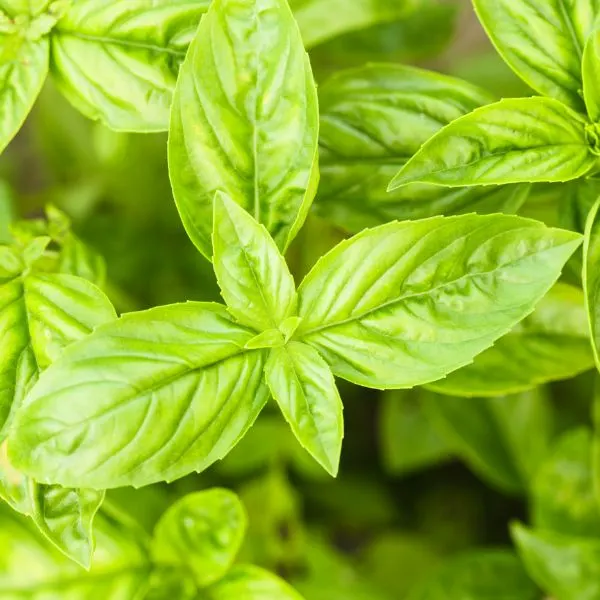
- Botanical name: Ocimum basilicum
- Sun Requirements: Full sun
- Soil Type: Fertile, well-drained, and loamy soil
Having some fresh basil in your garden is a real treat if you like to cook. While it’s certainly important for pesto and other Italian favorites, it’s also a staple ingredient in many Thai, Greek, Mexican, Vietnamese, and other favorite dishes across the planet. As it turns out, it’s also a great companion for your okra!
Your basil will get a little relief from the sun from time to time in your okra’s shade, and in return, it will help to keep whiteflies and aphids at bay. As a bonus, basil also acts as a pollinator to bring in helpful bees and butterflies.
2. Chamomile

- Botanical name: Matricaria chamomilla
- Sun Requirements: Full sun
- Soil Type: Rich, organic soil
If you’ve only tried chamomile tea from a pre-made brewing packet, then you’re doing yourself a disservice. When it’s freshly harvested and dried, Chamomile tastes amazing enough that you can even brew it up with sugar like southern sweet tea and it tastes a treat! (try it sometime, trust us on this one!).
When paired with okra, it is said to produce natural chemicals in the soil that will enhance the flavor of it, and those pretty flowers and the signature aroma will help to keep away certain types of pests, while attracting useful insects such as bees, ladybugs, and hoverflies. The aesthetics certainly don’t hurt, either, so give this pairing a try sometimes and see what you think!
3. Mint
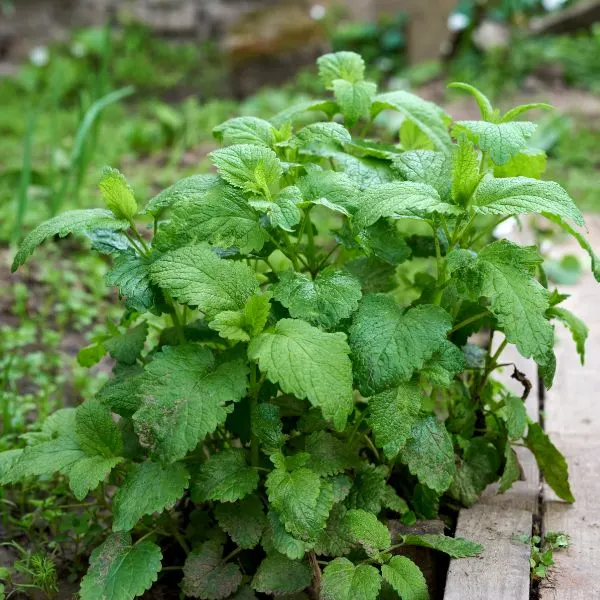
- Botanical name: Mentha
- Sun Requirements: Full sun to partial shade
- Soil Type: Moist, well-drained, and rich soil
Mint is another great companion choice for okra, although you’ll need to keep an eye on it as it likes to spread. If that’s not a problem for you then, then it can bring a few perks to the pairing beyond the amazing sweet scents.
Like many aromatic plants, mint will not smell as wonderful to pests, so spider mites, cabbage moths, and a few other unwelcome guests to your garden should give it a wide berth. On the flipside, LadyBugs love it, and will bring some natural color and useful utility to this well-paired patch.
4. Tarragon
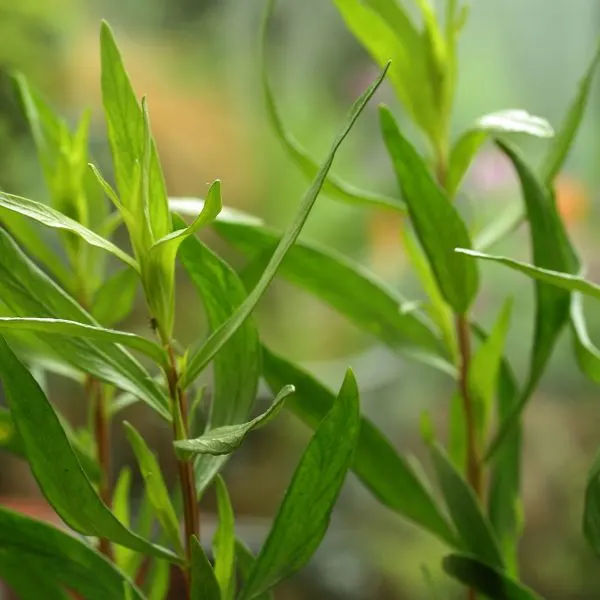
- Botanical name: Artemisia dracunculus
- Sun Requirements: Full sun
- Soil Type: Well-drained, sandy, light soil
Tarragon is great with an assortment of different foods, such as veal, eggs, salmon, artichokes, and asparagus, just to name a few, but you can also add okra to that list. As companions, these two will grow together quite well and your spring Tarragon, being a ‘light eater’ where the soil is concerned, won’t compete with your okra over resources.
While it’s growing, the Tarragon will emit a scent that keeps quite a lot of pesky insects at bay. The okra, in turn, will grow up healthy and strong, and help to shade the tarragon when it’s just a wee bit too hot outside. As garden buddies, it’s a simple pairing that works out well!
5. Oregano
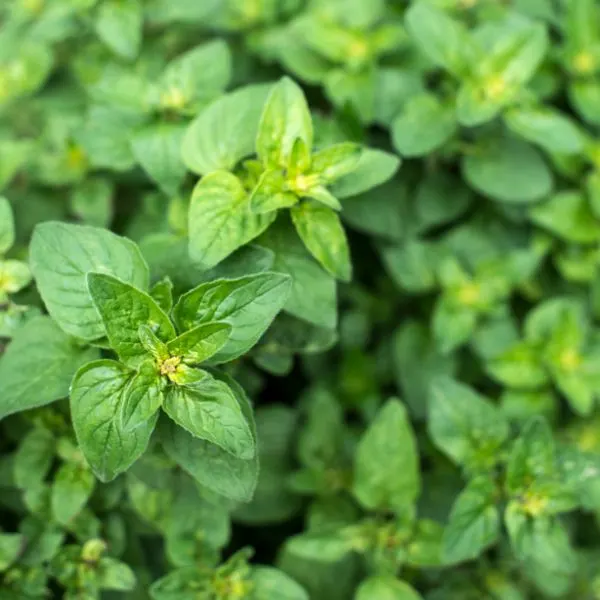
- Botanical name: Origanum vulgare
- Sun Requirements: Full sun (or partial shade in warmer climes)
- Soil Type: Sandy, well-drained soil
Nothing smells quite like fresh oregano growing in your garden or cooking in your kitchen. It’s a scent that you could pick out easily in a busy market, and that distinctive aroma also has some perks it can share with your okra!
Mosquitoes and many other types of pests simply can’t stand the smell of oregano, so much so that people make insect-repellent oils out of it from time to time. If you choose a creeping variety, such as sweet marjoram, then you’ll also get a little ground cover that can keep weeds at bay, help retain moisture in the soil, and even act as a natural mulch. All in all, not a bad garden mate to have where your okra is concerned!
Healthy Veggies and Delicious fruits
6. Beans

- Botanical name: Phaseolus vulgaris L.
- Sun Requirements: Full sun
- Soil Type: Well-drained clay loam
When they’re not in your bowl reminding you that they’re delicious, beans are out in the garden doing useful things that can be quite helpful for your okra and vice versa. For instance, if you like pole beans, then consider planting your okra first and letting it get about 11 or 12 inches in height before you plan some pole beans as a companion.
The pole beans can use that okra as a trellis now, and they’ll thank the beans for their support by spiking a little useful nitrogen in the soil! This is a nice little perk that comes with beans, but you’ll want to be sure that you don’t add in nitrogen-spiking fertilizer with this pairing, as this can cause the flowering to delay and you won’t be a happy camper.
As long as you watch the nitrogen, however, they’ll get along like gangbusters, and other types of beans, such as bush beans, work out well, too. Bush beans give a little ground cover and a natural mulching effect. So, consider beans as a pairing pal – they definitely pack some perks!
7. Melons
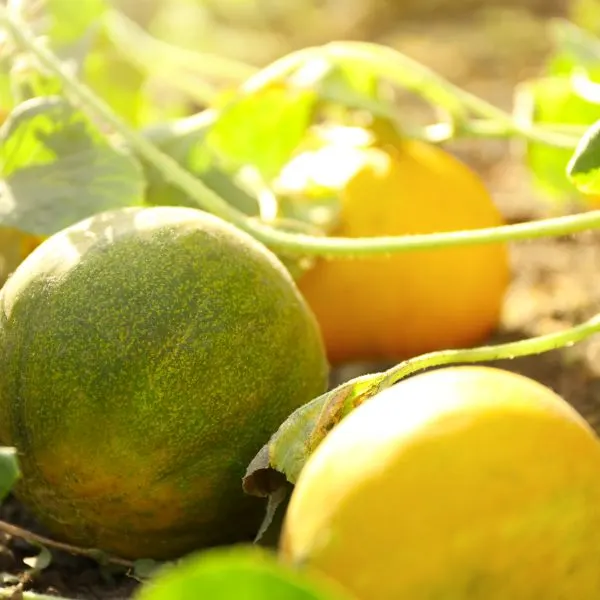
- Botanical name: Cucumis melo
- Sun Requirements: Full sun
- Soil Type: Well-drained, sandy loam (pH 6.0-6.5)
Melons and okra seem like an odd pairing, but while they contrast greatly to the palate, they play quite well together in your garden. Growing melons with your okra will save you a lot of space and their thirsty nature will help to ensure that you don’t overwater your okra.
Aesthetically, it’s a pretty pairing, but keep an eye on your yield come harvest time and that should be the final clencher. These warm-weather plants get along like the best of friends. For planting, consider sticking the melons on the east or west side of your okra, giving a little space for the vines. That will ensure that your melons get a good dose of sun come the morning or afternoon and you’ll get the best results from both plants!
8. Cucumbers
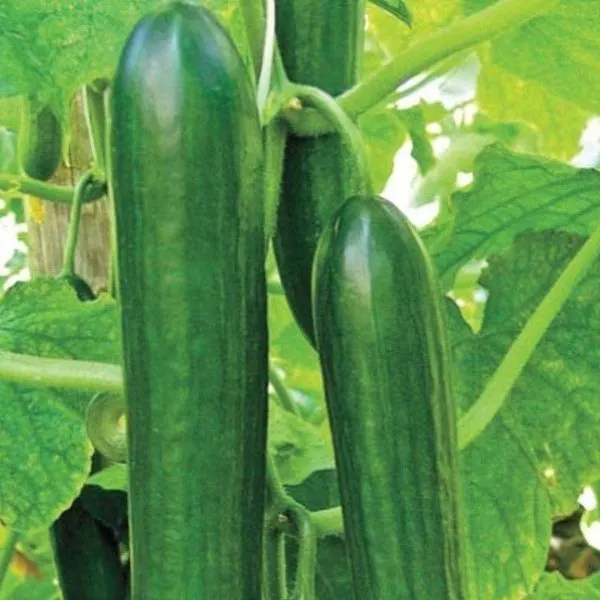
- Botanical name: Cucumis sativus
- Sun Requirements: Full sun
- Soil Type: Fertile, loose, and well-drained soil
If you love pickling at home or simply enjoy some fresh-sliced cucumber in your salads, then you might consider planting it next to your okra sometime. While they don’t really bring much in the way of special perks, these two plants get along like gangbusters, provided that you give the cucumbers a little extra space for their vines.
Both plants love rich and full sunlight, and your cucumbers will help a little by drinking up any excess water that might otherwise be a problem for your okra. It’s a small contribution, but a nice one, making these two a good plant pairing in a pinch!
9. Peppers
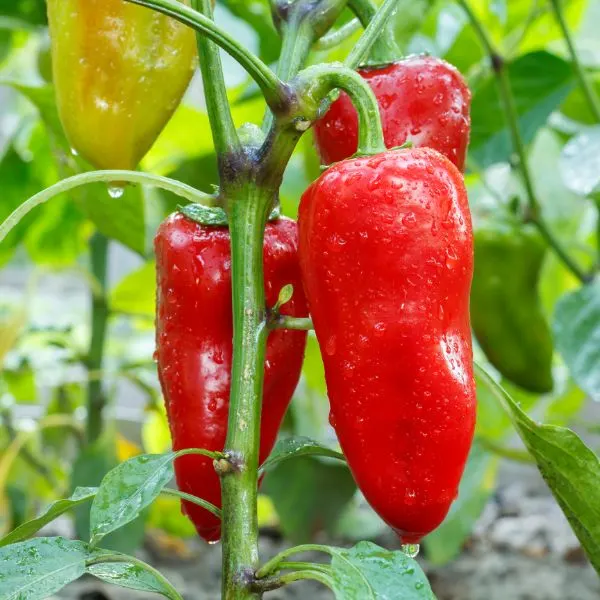
- Botanical name: Capsicum
- Sun Requirements: Full sun
- Soil Type: Rich, loamy soil
You can plant peppers together with okra for a few different schemes and it’s definitely a beneficial pairing. For instance, if predators are poaching your peppers, then you might plant a small amount of okra as a ‘trap crop’ and it will draw those pesky pests away. On the flipside, there are certain insects and animals that don’t like peppers much at all, so the peppers can act to protect your okra.
Okra also helps to produce certain nutrients in the soil and improves its ability to retain water, and once it starts getting tall, it can even pitch-in a little useful shade when it’s too hot outside — even for peppers! As roomies go, it’s a fairly symbiotic relationship and just about a perfect pairing.
10. Lettuce
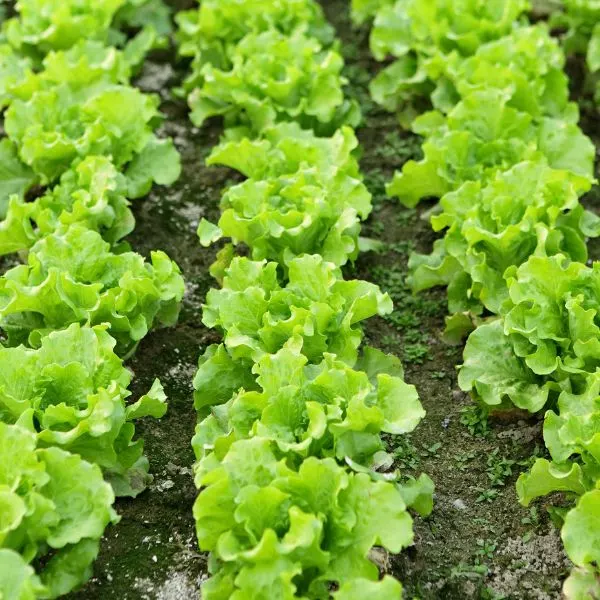
- Botanical name: Lactuca sativa
- Sun Requirements: Full sun or light shade
- Soil Type: Loose, well-drained soil with adequate nitrogen
Lettuce grows low to the ground, while Okra tries to reach for the sky, and somewhere in-between these two apparently find an exquisite balance. As companion plants go, lettuce and okra are a cent pair, with the okra prepping the soil with nitrogen that your lettuce will definitely put to good use.
This pairing saves a lot of space and if you live somewhere with an aggressive summer, then your okra will also chip-in a little relief for your lettuce in the form of convenient, cooling shade. The lettuce, in turn, will help keep you from overwatering your okra. All in all, they’re a pretty good team of two and a worthwhile companion planting pair.
11. Radishes
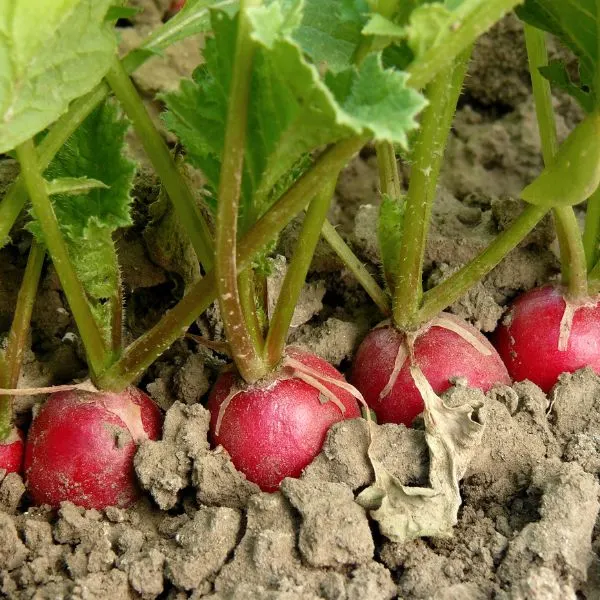
- Botanical name: Raphanus sativus
- Sun Requirements: Full sun
- Soil Type: Sandy, well-drained, and light soils
Another odd couple that you might not think of trying is radishes and okra and surprise, surprise – these two really work well together. The reason for this is that your radish seeds will work hard establishing themselves in the soil, and those probing roots will soften it up for your okra in the process!
Aside from this, those radishes will be ready to harvest a good two weeks before your okra starts getting massive and needing more resources. Give this planting pair a try and you’ll see for yourself – they really do get along quite well!
12. Peas
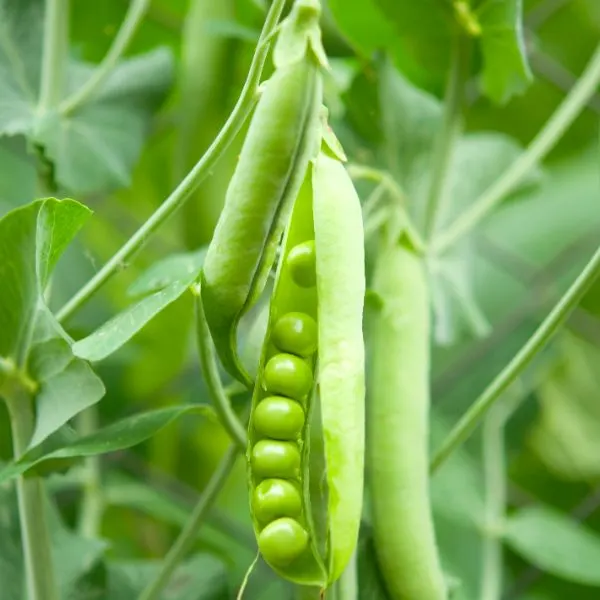
- Botanical name: Pisum sativum
- Sun Requirements: Full sun
- Soil Type: Fertile, well-draining, loamy soil
Like beans, Peas do a little magic trick where they can add nitrogen to the soil. Peas, beans, and other legumes accomplish this by interacting with bacteria in the soil in a symbiotic fashion.
The bacteria produce nitrogen, while the peas produce a thank-you package of carbohydrates, and everyone is happy. This makes them beneficial to your okra as well, provided that you don’t overdo it by adding nitrogen-rich fertilizers – just let the peas do their work.
Finally – and this is weird – while peas are a winter crop and okra is a child of the summer, when you grow them together you can actually stagger their seasons, so that you can get more of a yield from both throughout the year. Try it and see for yourself – it’s like a garden magic trick!
Ornamental additions
13. Coneflowers
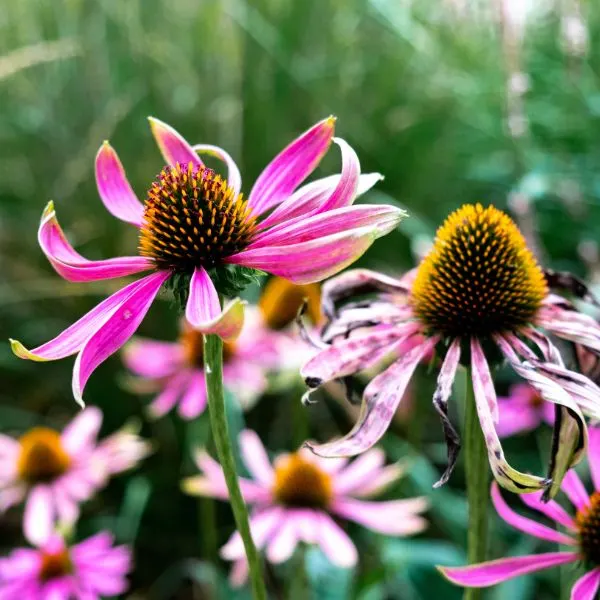
- Botanical name: Echinacea
- Sun Requirements: Full sun to partial shade
- Soil Type: Loamy soil
Ornamental and medicinal, Coneflowers are a popular choice for adding some aesthetics and utility to your garden, and they’ll get along quite well with your annual okra. While those coneflowers are springing up and bringing a little beauty, they’ll also attract useful pollinators, along with pest-predators such as wasps and parasitoid flies.
Just be sure to give your okra a little space so that you’ll be able to easily harvest your okra and clear up any debris when you do, so that you don’t inadvertently attract pests with a messy space. Provided that you can stick to these two easy rules,then these plants will pair quite well together.
14. Cosmos
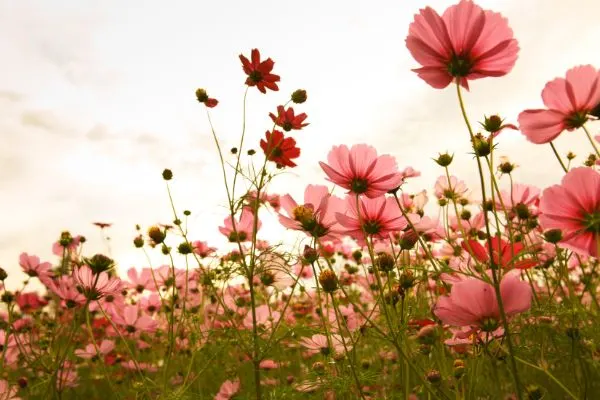
- Botanical name: Cosmos sulphureus
- Sun Requirements: Full sun (or partial shade in warmer climes)
- Soil Type: Chalky, sandy, or loamy soils
Easy to grow, Cosmos can bring white, pink, orange, purple, or red flowers into your little patch of okra and they’ll pop right up, even in the poorest of soils! Aside from looking-good, they’ll also lure in butterflies, bees, and other beneficial insects, and as pests seem to leave these plants alone, they will also help afford a little mild protection for your okra!
While you are deciding on which cosmos to plant, be sure to check around a little – certain types are actually edible, so you might just get one extra perk from this pairing to complete the mix!
15. Marigolds
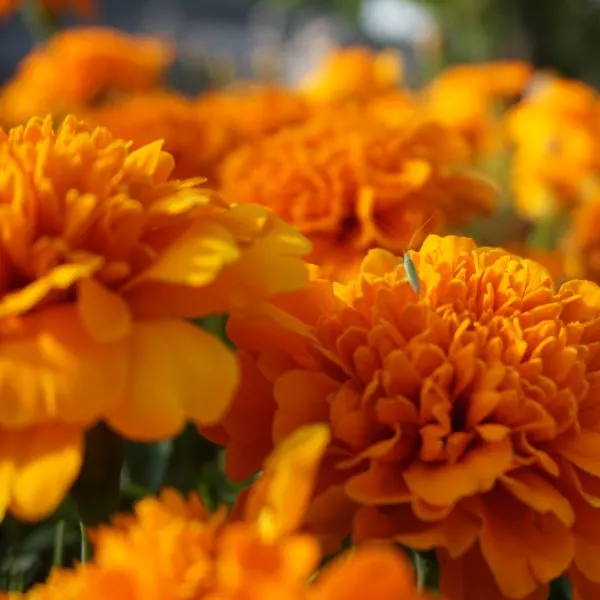
- Botanical name: Tagetes
- Sun Requirements: Full sun
- Soil Type: Well-drained, Loamy soil
Marigolds are another ornamental option that’s not afraid to pull its own weight in the garden. While they will certainly bring beautiful flowers, these lovelies can also act as a sort of living mulch, helping the soil to retain moisture and crowding up space that weeds might otherwise occupy.
If that’s not enough, these plants will also repel a number of pests, such as mosquitoes, root-knot nematodes, tomato worms, and squash bugs. As far as companion plants go, Marigolds are a choice that really packs the perks!
Bad companions for okra
While okra tends to make friends wherever it goes, there are definitely some pairings that are downright toxic and best avoided. In the sections below, we’ll give you some examples of some bad companions for okra and tell you why they aren’t such a good idea. Let’s take a look!
1. Mustard greens
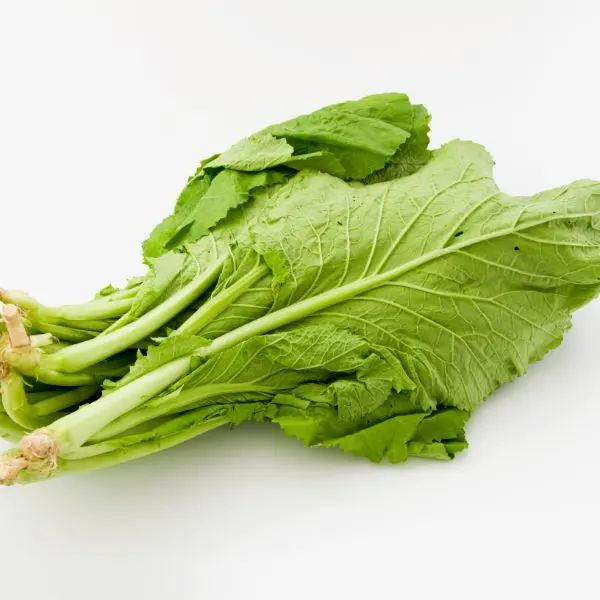
Okra tends to grow up quickly, but it can’t hold a candle to the fast-growing action of broadleaf mustard greens. If you plant these two together, then what can happen is the mustard will spring up so quickly that your okra will get bullied out of resources. As such, it’s best to keep these two separated for your okra’s own good.
2. Lacinato Kale
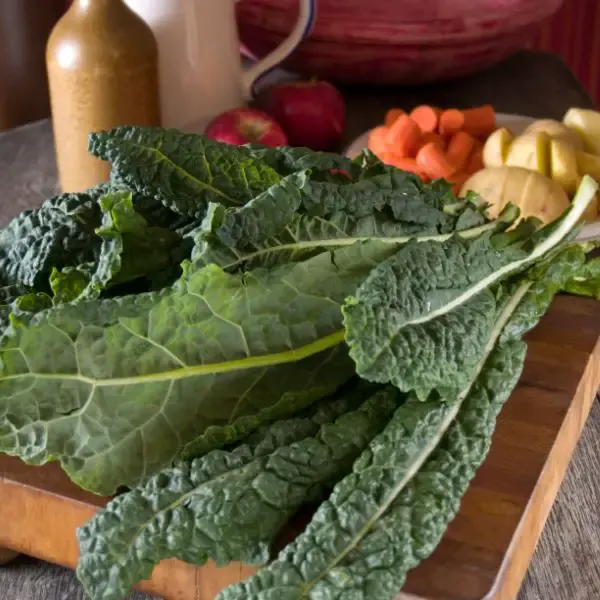
While you can grow regular kale with okra and they’ll grow up to be buddies, it’s not the same with Lacinato kale for the same reason as those broadleaf mustard greens – it simply springs up too fast. So, don’t plant them together or when it’s time to harvest you’ll end up sowing lacinato kale… and a little disappointment where your okra was supposed to be!
3. Tomatoes
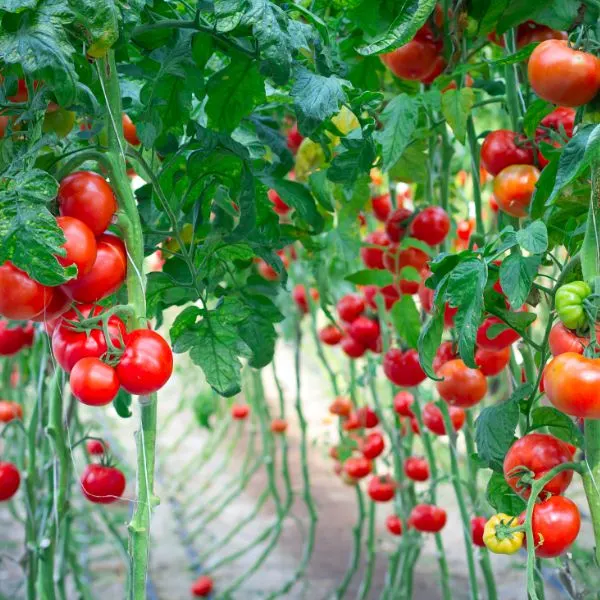
Tomatoes are a garden favorite, but it’s best to keep them separated from your okra. The biggest problem with this pairing is that your vining tomatoes are going to hog up a lot of sun, constantly competing with the okra in a race that the tomatoes will probably win. They can also attract root nematodes, which also are fond of your okra.
4. Potatoes
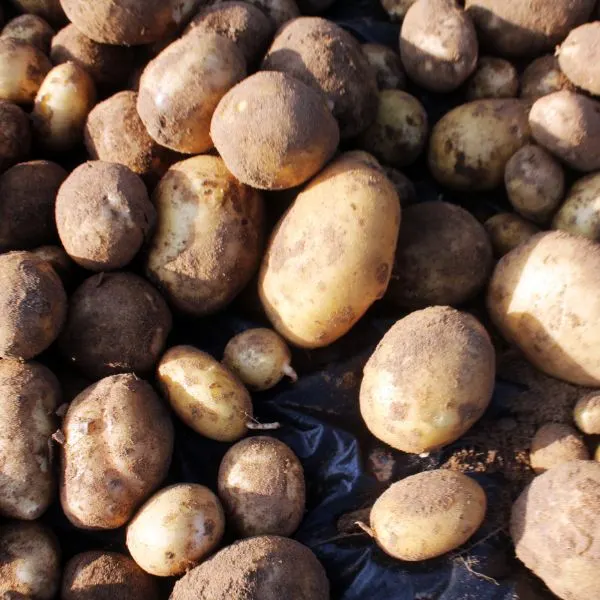
Potatoes need their own space, or at a more suitable companion, at least, than okra. Growing them with okra won’t hurt the potatoes, but those taters simply grow too fast for your okra to keep up. As a result, the potatoes will get all the resources and your okra might not grow at all!
5. Fruit Trees

Planting okra next to fruit trees, or ANY trees for that matter, is simply not a good idea. Okra needs a LOT of sunlight, and putting it next to a tree will definitely cut a chunk of daily rays out of your okra’s growing regimen. As such, it’s a pairing that we simply cannot recommend.
FAQs
It’s time for us to wrap things up, but on our way out we thought that we might share some frequently asked questions that we get a lot on the subject of companion planting with okra. We hope that you’ll find this information useful for filling in any gaps that we might have missed along the way and with that, here are those questions!
What is the best companion plant for okra?

Okra is kind of like that friend that you have who seems to get along with just about anybody. If we had to pick some ‘best friend material’ for it, however, then herbs tend to be the best choice. Examples include hyssop, thyme, coriander, tansy, yarrow, and rue, just to name a few.
The reason why they work so well together is that these spices and medicinal plants tend to repel a lot of pests that could otherwise get into your okra. So, if you already have an herb garden, try sneaking a little okra into it to see what kind of yield you get. Odds are, you’ll be very happy that you did!
What are the worst companion plants for okra?

Probably the worst of the bunch when it comes to companions would be squash plants and you have to be really careful with nightshades, as sometimes they’ll attract root nematodes and when you are harvesting, you can get a build up in that area that’ll come and bite you the next year.
For the most part, however, you can grow quite a lot of companion plants with okra, but it’s a good idea to look them up online – some will work much better with a little extra space.
What’s the best okra variety to choose for companion planting?

If you’re planting strategically, why not go for the highest yields of okra that you can get? For companion planting if you want to do this, varieties such as ‘Clemson spineless’ and ‘long green’ okras will produce enormous pods that are sure to get you more okra for your efforts!
Some final words on companion plants for okra
Today we’ve explored a list of the best and worst companion plants for okra and there’s definitely not a shortage of options! Okra is a friendly plant that will get along well with most, just be sure to keep it away from fast growers like Lacinato Kale, potatoes, or broadleaf mustard as these plants will outpace your germinated okra seeds and hog up all the resources!
For a little companion planting of your own, we recommend that you start with one or more of the examples that we’ve shared today and if you like the results, then feel free to experiment with other combos so that you can see what happens.
Companion planting in your garden is a whole lot of fun and with a little experimentation, who knows? You might just find a killer 2 or 3 plant combo that produces some out-of-this-world results! Until next time, thanks so much for visiting, and we hope to see you again soon!
More companion plants
